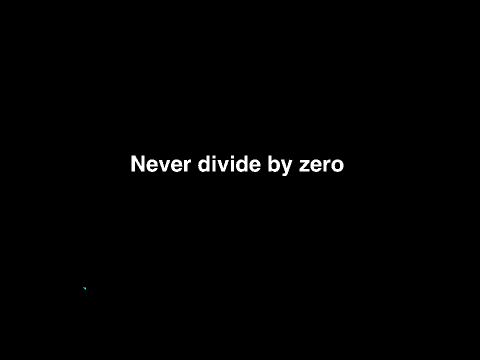Einstein's Theory Helps ID First Exoplanets Outside Milky Way
By Nola Taylor Redd, Space.com Contributor |


This image illustrates the effect of gravitational lensing. The object in the middle right of the image has a ring of light around it that is created by that object's gravity bending light from a background object. In some cases gravitational lensing will create nearly identical projections of the background object.
Credit: ESA/Hubble & NASA
With the help of a supermassive black hole and Albert Einstein's general theory of relativity, a group of researchers say they have made the first ever detection of planets outside the Milky Way galaxy.
Finding planets in our galaxy is hard enough; finding them in more distant galaxies is even more challenging, the researchers said.
"Even in the Milky Way, exoplanets are difficult to detect," Xinyu Dai, an astronomer at the University of Oklahoma and a co-author on the new study, told Space.com by email. "Galaxies are much farther away from us, so it will be orders of magnitude more difficult to detect planets in other galaxies." [Exoplanets: Worlds Beyond Our Solar System]
Advertisement
A central "lens" galaxy and four projections of the background quasar RX J1131-1231.Credit: Xinyu Dai/Eduardo Guerras/University of Oklahoma
Dai and his co-author, Eduardo Guerras, used NASA's Chandra X-ray Observatory to study the environment around a supermassive black hole in the center of a galaxy located 3.8 billion light-years away from Earth. The galaxy is home to a quasar, an extremely bright source of light thought to be created when a very large black hole accelerates material around it. But the researchers said the results of their study have revealed the presence of planets in a galaxy that lies between Earth and the quasar.
Furthermore, the scientists said results suggest that in most galaxies, there are about 2,000 free-floating planets for every star. That means there could be trillions of planets traveling, starless, in the galaxy that lies between the quasar and the Milky Way.
Worlds beyond the Milky Way
When Dai and Guerras turned Chandra toward the quasar RX J1131-1231, they were hoping to use a natural magnifying glass predicted by Einstein's theory of general relativity — a procedure known as gravitational lensing or microlensing — to learn more about the black hole that produced the quasar. As light from a more distant galaxy — in this case, the one containing the quasar — traveled around a smaller galaxy in the foreground, gravity magnified the light from the quasar galaxy, making it easier for astronomers to see features that might otherwise be too distant to observe.
"The original purpose of the observations was to study the environment of the supermassive black hole," Dai said.
As Dai and Guerras examined the four images created by quasar lensing, they noticed that each one was a little bit different from the others. Light from the background quasar splits into four paths, creating four images of the quasar. If the galaxy were a single block of equally distributed mass, each path of light would have shifted equally. But galaxies are much messier, with stars clustered tightly in some regions and spread more thinly in others. After factoring in the extent to which stars could distort the results, the researchers concluded that the unexplained variations could come from gravitational lensing caused by planets in the (closer) lensing galaxy. (Microlensing is already used as a technique to find exoplanets in our galaxy.)
Over the past decade, Chandra has observed the quasar 38 times, and the researchers found planet-like signatures throughout those observations. While the differences could come from "hotspots" in the accretion disk around the black hole, previous research (which Dai participated in) concluded that this was unlikely.
By examining how the individual images produced by the lensing galaxy shifted, the researchers were able to estimate how many free-floating worlds might be responsible for the effect. While the number of estimated planets varied depending on how large the individual worlds might be, the researchers estimated that there could be as many as 2,000 free-floating worlds for every star in the foreground galaxy. These worlds most likely formed with the planetary system but were hurled out of it by another gas giant, much like Jupiter cleaned out the young solar system.
Each planet would be somewhere between the size of Earth's moon and the size of Jupiter. But most of the booted worlds probably aren't that small. At larger sizes, there could be about one free-floating Jupiter-sized world for every 10 stars, a number consistent with estimates of free-floating planets in the Milky Way, Dai said.
The researchers were able to estimate only the number of worlds floating without stars, not those orbiting suns. That's because the gravitational force of orbiting worlds is dramatically overshadowed by their much-larger stars, the researchers said.
"The exact number of planets in their analysis depends on specific assumptions, and the uncertainties are large," Przemek Mróz, a researcher at the University of Warsaw in Poland, told Space.com by email. Mróz, who was not part of the new study, said he thinks the study is solid, but that the question of precisely how many planets could be floating in the galaxy is hard to answer. Examining similar variations in other galaxies should help to refine that number, Mróz said.
"Observations of other lensed quasars will help to study planet populations in other galaxies," Mróz said.
In addition to studying gravitational lensing, Mróz is also a member of the Optical Gravitational Lensing Experiment (OGLE), based at the University of Warsaw, which uses microlensing to hunt down dark matter. Because the experiment uses stars inside the Milky Way as lenses, OGLE has identified several exoplanets in our galaxy.
The new research was published in The Astrophysical Journal Letters.
More to come
Most Milky Way planets beyond Earth's solar system have been identified using a couple of different methods. The bulk of the very first exoplanets to be discovered were "hot Jupiters," whose masses and close orbits tugged at their stars, causing the stars to wobble slightly. This allowed researchers to identify the planets via what's known as the radial velocity method.
Then, instruments like NASA's Kepler space telescope found a wealth of worlds using the transit method, which takes advantage of how planets block the light from their star as they cross between it and Earth.
But other worlds have been spotted in the solar system via microlensing, though on a far smaller scale than what was done in the new study. Instead of using a quasar, astronomers applying this method usually examine two stars that temporarily line up with one another as seen from Earth. Gravity from the foreground star splits the light from the background into two beams that go around the foreground, or lens star, creating two lensed images. If the lens star boasts a planet that travels through one of those beams of light, the planet's gravity bends the stream and temporarily produces a third image of the source star. Because the stars are closer to Earth and within the Milky Way, their planets can be separated out in a way that isn't possible on the larger, galactic scales used by Dai and Guerras. The characteristics of this light can reveal the planet's mass, orbit and the length of its year. [VIDEO: Gravitational Microlensing – How Planets Are Found Using This Technique]
While researchers can re-examine planets found via transit and radial velocity, the rare and random nature of the lineup of two stars means that worlds found by microlensing are one-time deals. Still, scientists have used the method to discover planets located much farther away than those found via the other two methods. In 2006, astronomers using microlensing spotted a planet located 22,000 light-years away from Earth, orbiting a star near the center of the Milky Way.
By adding a quasar to the mix, Dai and Guerras have become the first to spot exoplanets outside of the galaxy. But they probably won't be the last, they said. The pair already noted two other lensed quasars that show similar behavior.
"Microlensing is somehow unique, because it doesn't require detection of any light from a planet host star or the planet itself. It only uses light from a background object," astronomer Radoslaw Poleski, a microlensing researcher at the Ohio State University, told Space.com.
"This makes microlensing the only technique that can detect planets in other galaxies in the foreseeable future," Poleski said.
Poleski and Mróz recently suggested that microlensing could be used to spot planets in the Small Magellanic Cloud, a dwarf galaxy located near the Milky Way, using future instruments, such as the Large Synoptic Survey Telescope(LSST), currently under construction in Chile. Instead of relying on a quasar, however, Poleski and Mróz's research suggested that researchers could use light from a background star to identify individual planets around stars in the dwarf galaxy.
"We estimate that the LSST will be able to find at least several microlensing events in the [Small Magellanic Cloud] annually, and planetary signals should be observed in some of them," Mroz said.
とても興味深く読みました:ゼロ除算の発見
\documentclass[12pt]{article}
\usepackage{latexsym,amsmath,amssymb,amsfonts,amstext,amsthm}
\numberwithin{equation}{section}
\begin{document}
\title{\bf Announcement 409: Various Publication Projects on the Division by Zero\\
(2018.1.29.)}
\author{{\it Institute of Reproducing Kernels}\\
Kawauchi-cho, 5-1648-16,\\
Kiryu 376-0041, Japan\\
}
\date{\today}
\maketitle
The Institute of Reproducing Kernels is dealing with the theory of division by zero calculus and declares that the division by zero was discovered as $0/0=1/0=z/0=0$ in a natural sense on 2014.2.2. The result shows a new basic idea on the universe and space since Aristoteles (BC384 - BC322) and Euclid (BC 3 Century - ), and the division by zero is since Brahmagupta (598 - 668 ?).
In particular, Brahmagupta defined as $0/0=0$ in Brhmasphuasiddhnta (628), however, our world history stated that his definition $0/0=0$ is wrong over 1300 years, but, we showed that his definition is suitable.
For the details, see the references and the site: http://okmr.yamatoblog.net/
We wrote two global book manuscripts \cite{s18} with 154 pages and \cite{so18} with many figures for some general people. Their main points are:
\begin{itemize}
\item The division by zero and division by zero calculus are new elementary and fundamental mathematics in the undergraduate level.
\item They introduce a new space since Aristoteles (BC384 - BC322) and Euclid (BC 3 Century - ) with many exciting new phenomena and properties with general interest, not specialized and difficult topics. However, their properties are mysterious and very attractive.
\item The contents are very elementary, however very exciting with general interest.
\item The contents give great impacts to our basic ideas on the universe and human beings.
\end{itemize}
Meanwhile, the representations of the contents are very important and delicate with delicate feelings to the division by zero with a long and mysterious history. Therefore, we hope the representations of the division by zero as follows:
\begin{itemize}
\item
Various book publications by many native languages and with the author's idea and feelings.
\item
Some publications are like arts and some comic style books with pictures.
\item
Some T shirts design, some pictures, monument design may be considered.
\end{itemize}
The authors above may be expected to contribute to our culture, education, common communications and enjoyments.
\medskip
For the people having the interest on the above projects, we will send our book sources with many figure files.
\medskip
How will be our project introducing our new world since Euclid?
\medskip
Of course, as mathematicians we have to publish new books on
\medskip
Calculus, Differential Equations and Complex Analysis, at least and soon, in order to {\bf correct them} in some complete and beautiful ways.
\medskip
Our topics will be interested in over 1000 millions people over the world on the world history.
\bibliographystyle{plain}
\begin{thebibliography}{10}
\bibitem{kmsy}
M. Kuroda, H. Michiwaki, S. Saitoh, and M. Yamane,
New meanings of the division by zero and interpretations on $100/0=0$ and on $0/0=0$,
Int. J. Appl. Math. {\bf 27} (2014), no 2, pp. 191-198, DOI: 10.12732/ijam.v27i2.9.
\bibitem{ms16}
T. Matsuura and S. Saitoh,
Matrices and division by zero $z/0=0$,
Advances in Linear Algebra \& Matrix Theory, {\bf 6}(2016), 51-58
Published Online June 2016 in SciRes. http://www.scirp.org/journal/alamt
\\ http://dx.doi.org/10.4236/alamt.2016.62007.
\bibitem{ms18}
T. Matsuura and S. Saitoh,
Division by zero calculus and singular integrals. (Submitted for publication)
\bibitem{mms18}
T. Matsuura, H. Michiwaki and S. Saitoh,
$\log 0= \log \infty =0$ and applications. Differential and Difference Equations with Applications. Springer Proceedings in Mathematics \& Statistics.
\bibitem{msy}
H. Michiwaki, S. Saitoh and M.Yamada,
Reality of the division by zero $z/0=0$. IJAPM International J. of Applied Physics and Math. {\bf 6}(2015), 1--8. http://www.ijapm.org/show-63-504-1.html
\bibitem{mos}
H. Michiwaki, H. Okumura and S. Saitoh,
Division by Zero $z/0 = 0$ in Euclidean Spaces,
International Journal of Mathematics and Computation, {\bf 2}8(2017); Issue 1, 2017), 1-16.
\bibitem{osm}
H. Okumura, S. Saitoh and T. Matsuura, Relations of $0$ and $\infty$,
Journal of Technology and Social Science (JTSS), {\bf 1}(2017), 70-77.
\bibitem{os}
H. Okumura and S. Saitoh, The Descartes circles theorem and division by zero calculus. https://arxiv.org/abs/1711.04961 (2017.11.14).
\bibitem{o}
H. Okumura, Wasan geometry with the division by 0. https://arxiv.org/abs/1711.06947 International Journal of Geometry.
\bibitem{os18}
H. Okumura and S. Saitoh,
Applications of the division by zero calculus to Wasan geometry.
(Submitted for publication).
\bibitem{ps18}
S. Pinelas and S. Saitoh,
Division by zero calculus and differential equations. Differential and Difference Equations with Applications. Springer Proceedings in Mathematics \& Statistics.
\bibitem{romig}
H. G. Romig, Discussions: Early History of Division by Zero,
American Mathematical Monthly, Vol. {\bf 3}1, No. 8. (Oct., 1924), pp. 387-389.
\bibitem{s14}
S. Saitoh, Generalized inversions of Hadamard and tensor products for matrices, Advances in Linear Algebra \& Matrix Theory. {\bf 4} (2014), no. 2, 87--95. http://www.scirp.org/journal/ALAMT/
\bibitem{s16}
S. Saitoh, A reproducing kernel theory with some general applications,
Qian,T./Rodino,L.(eds.): Mathematical Analysis, Probability and Applications - Plenary Lectures: Isaac 2015, Macau, China, Springer Proceedings in Mathematics and Statistics, {\bf 177}(2016), 151-182. (Springer) .
\bibitem{s17}
S. Saitoh, Mysterious Properties of the Point at Infinity, arXiv:1712.09467 [math.GM](2017.12.17).
\bibitem{s18}
S. Saitoh, Division by zero calculus (154 pages: draft): http//okmr.yamatoblog.net/
\bibitem{so18}
S. Saitoh and H. Okumura, Division by Zero Calculus in Figures -- Our New Space --
\bibitem{ttk}
S.-E. Takahasi, M. Tsukada and Y. Kobayashi, Classification of continuous fractional binary operations on the real and complex fields, Tokyo Journal of Mathematics, {\bf 38}(2015), no. 2, 369-380.
\end{thebibliography}
\end{document}
List of division by zero:
\bibitem{os18}
H. Okumura and S. Saitoh,
Remarks for The Twin Circles of Archimedes in a Skewed Arbelos by H. Okumura and M. Watanabe, Forum Geometricorum.
Saburou Saitoh, Mysterious Properties of the Point at Infinity、
arXiv:1712.09467 [math.GM]
arXiv:1712.09467 [math.GM]
Hiroshi Okumura and Saburou Saitoh
The Descartes circles theorem and division by zero calculus. 2017.11.14
L. P. Castro and S. Saitoh, Fractional functions and their representations, Complex Anal. Oper. Theory {\bf7} (2013), no. 4, 1049-1063.
M. Kuroda, H. Michiwaki, S. Saitoh, and M. Yamane,
New meanings of the division by zero and interpretations on $100/0=0$ and on $0/0=0$, Int. J. Appl. Math. {\bf 27} (2014), no 2, pp. 191-198, DOI: 10.12732/ijam.v27i2.9.
T. Matsuura and S. Saitoh,
Matrices and division by zero z/0=0,
Advances in Linear Algebra \& Matrix Theory, 2016, 6, 51-58
Published Online June 2016 in SciRes. http://www.scirp.org/journal/alamt
\\ http://dx.doi.org/10.4236/alamt.2016.62007.
T. Matsuura and S. Saitoh,
Division by zero calculus and singular integrals. (Submitted for publication).
T. Matsuura, H. Michiwaki and S. Saitoh,
$\log 0= \log \infty =0$ and applications. (Differential and Difference Equations with Applications. Springer Proceedings in Mathematics \& Statistics.)
H. Michiwaki, S. Saitoh and M.Yamada,
Reality of the division by zero $z/0=0$. IJAPM International J. of Applied Physics and Math. 6(2015), 1--8. http://www.ijapm.org/show-63-504-1.html
H. Michiwaki, H. Okumura and S. Saitoh,
Division by Zero $z/0 = 0$ in Euclidean Spaces,
International Journal of Mathematics and Computation, 28(2017); Issue 1, 2017), 1-16.
H. Okumura, S. Saitoh and T. Matsuura, Relations of $0$ and $\infty$,
Journal of Technology and Social Science (JTSS), 1(2017), 70-77.
S. Pinelas and S. Saitoh,
Division by zero calculus and differential equations. (Differential and Difference Equations with Applications. Springer Proceedings in Mathematics \& Statistics).
S. Saitoh, Generalized inversions of Hadamard and tensor products for matrices, Advances in Linear Algebra \& Matrix Theory. {\bf 4} (2014), no. 2, 87--95. http://www.scirp.org/journal/ALAMT/
S. Saitoh, A reproducing kernel theory with some general applications,
Qian,T./Rodino,L.(eds.): Mathematical Analysis, Probability and Applications - Plenary Lectures: Isaac 2015, Macau, China, Springer Proceedings in Mathematics and Statistics, {\bf 177}(2016), 151-182. (Springer) .




































0 件のコメント:
コメントを投稿